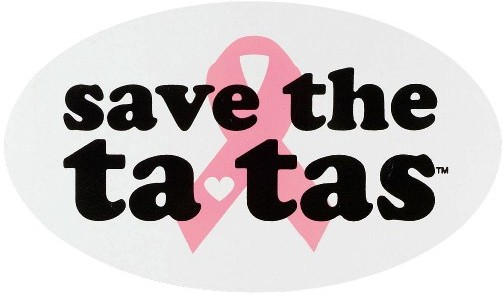As most of us already know, October is National Breast Cancer Awareness Month! This month will be filled with a whole lot of emotion, support, awareness and PINK!
The National Breast Cancer Awareness Month (NBCAM) Organization
The National Breast Cancer Awareness Month Organization is working together with other national organizations to promote breast cancer awareness, share information on the disease, and provide greater access to screening services. Their primary mission is to encourage women to get periodic mammograms. The organization celebrated its 25th anniversary in 2009 and continues to spread the word about breast cancer. While October is recognized as National Breast Cancer Awareness Month, the NBCAM website is a year-round resource for breast cancer patients, survivors, caregivers, and the general public. Find the nearest location to get a mammogram.
The Pink Ribbon
The pink ribbon is a symbol for breast cancer everywhere. All of the players in the NFL wear pink throughout the month of October. Well, how did people settle on the color pink? Actually, that has a lot to do with SELF Magazine!
In 1990, Pink Visors were handed out at the first Race for the Cure. In 1992, the editor in chief at SELF Magazine was working on a campaign to distribute pink ribbons through the magazine and Estee Lauder.
Around the same time, Charlotte Haley, a sixty-eight-year-old with a history of breast cancer in her family, began making peach-colored ribbons in her dining room at home. Peach is also the color of AIDS ribbons. Each set of five came with a card that read: “The National Cancer Institute annual budget is $1.8 billion, only 5 percent goes for cancer prevention. Help us wake up our legislators and America by wearing this ribbon.”
SELF Magazine approached Haley before they approached Estee Lauder and she declined in fear of commercialization of her approach. At that time, SELF Magazine and their lawyers settled on a different color for their ribbon distribution: pink! Due to the publication of SELF Magazine and the distribution of ribbons, the symbol became known over the country.
Breast Cancer Statistics and Information
- About 1 in 8 women in the United States (12%) will develop invasive breast cancer over the course of her lifetime.
- About 39,840 women in the U.S. were expected to die in 2010 from breast cancer, though death rates have been decreasing since 1990. These decreases are thought to be the result of treatment advances, earlier detection through screening, and increased awareness.
- In 2010, there were more than 2.5 million breast cancer survivors in the U.S.
- The most significant risk factors for breast cancer are gender (being a woman) and age (growing older).
Check out some more breast cancer facts here!
Breast Cancer Video: Show your Support
There are many things you can do to get involved and show your support such as donating money, wearing a pink ribbon or volunteering your time at a local fundraising event. Check out your local news station to find out what they are doing to support breast cancer awareness locally.
The Pink Glove Dance started a couple years ago as one video. It has grown into a trend for people to show their support for breast cancer. Which video is your favorite?
Breast Cancer Resources
National Breast Cancer Foundation
The Breast Cancer Organization
Signs and Symptoms of Breast Cancer
Diagnosis and Staging of Breast Cancer
Breast Cancer Blogs and Articles
Breast Cancer Treatments and Drugs
There is no treatment that will cure every person and every type of cancer. The doctor and patient will come to a consensus of what treatment they want to try. Every patient and cancer is unique. Below is a list of breast cancer treatments and drugs.
Surgeries:
- Removing the breast cancer (lumpectomy)
- Removing the entire breast (mastectomy)
- Removing one lymph node (sentinel node biopsy)
- Removing several lymph nodes (axillary lymph node dissection)
Therapies:
- Radiation therapy
- Chemotherapy
- Hormone therapy:
- Medications that block hormones from attaching to cancer cells
- Medications that stop the body from making estrogen after menopause
- Surgery or medications to stop hormone production in the ovaries
Targeted drugs:
- Trastuzumab (Herceptin)
- Lapatinib (Tykerb)
- Bevacizumab (Avastin)
Clinical trials:
- New combinations of existing drugs
- Bone-building drugs to prevent breast cancer recurrence
- Using higher doses of radiation over a shorter period of time on a smaller portion of the breast
How You Can Help
Breast Cancer Awareness lasts throughout the year. How have you been affected by breast cancer? Chances are someone you know has it. The best protection is early detection.
Click Here to give a Mammogram for Free!
Click here to make a charitable donation!
Find a Cancer Screening or Mammogram facility.
Form a buddy check and remind each other once a month to check your breasts.
How are you making a difference this month? Leave a comment below to tell us your story and what you are doing to save the Tata’s!

